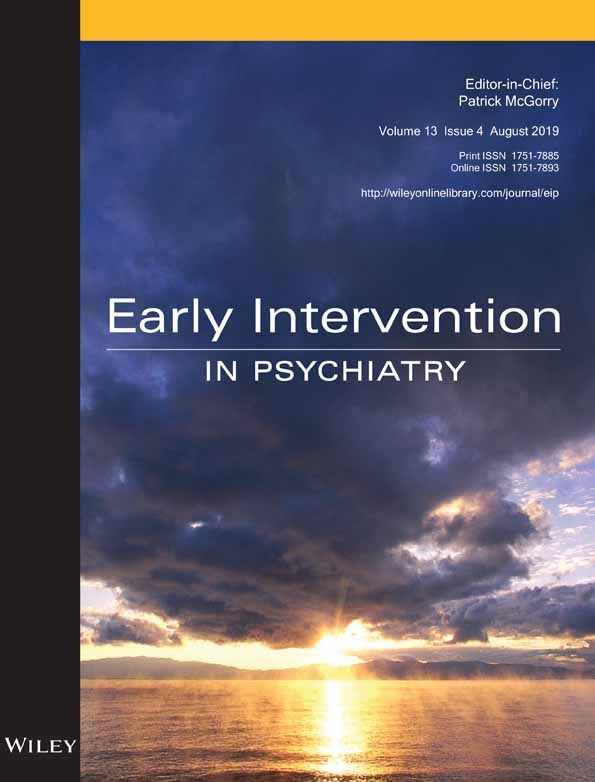Are patterns of violence and aggression at presentation in patients with first-episode psychosis temporally stable? A comparison of 2 cohorts
Abstract
Aim
The aim of this study is to assess the prevalence and clinical correlates of aggression and violence in individuals presenting with first-episode psychosis (FEP) and to evaluate whether this prevalence has changed in recent years when compared to a similar previous study.
Methods
Retrospective cross-sectional study of clinical case notes and database records using a keyword search of a sample of patients with FEP (n = 132) aged between 18 and 65 years presenting from a geographically defined catchment area to a secondary referral psychiatric service over a 4-year period (2010-2013 inclusive). Use of the Modified Overt Aggression Scale to retrospectively assess aggression and violence in the week prior to, and post, presentation with FEP.
Results
The overall proportion of individuals found to be aggressive and violent was 36% and 29%, respectively. These rates were similar to the 1995 to 1998 cohort (ie, 33% and 29%). A higher percentage of our sample (22%) was violent in the week prior to presentation compared to the 1995 to 1998 cohort (13%). Aggression was independently associated with involuntary (odds ratio [OR] = 4.085, 95% confidence interval [CI] 1.310-12.733) and inpatient treatment status (OR = 0.109, 95% CI 0.023-0.532) in the week prior to presentation and with high activation (OR = 6.770, 95% CI 1.372-33.394) and involuntary treatment status (OR = 10.163, 95% CI 2.257-45.759) in the week following presentation. Violence was associated with involuntary (OR = 3.691, 95% CI 1.197-11.382) and inpatient status (OR = 0.096, 95% CI 0.020-0.465) in the week prior to and with high activation (OR = 29.513 95% CI 1.879-463.676) the week following presentation.
Conclusions
Aggression and violence rates in FEP appear relatively stable over time.




